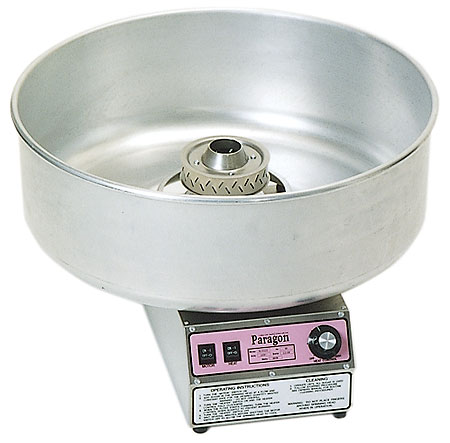The Curious Origins of Cotton Candy

Dental floss? That’s good for your teeth and gums.
Fairy floss? If you’re in Australia, you already know that it’s anything but good for your oral health. For those of us in the rest of the English-speaking world, the reason why is pretty clear: outside of Australia, fairy floss is known as cotton candy or candyfloss.
Cotton candy is basically sugar, air, and a touch of food coloring. It’s been around for a long, long time — some sources say the 18th century, others the 15th — but until the late 1800s, it wasn’t very popular. Before then, it had to be made by manually spinning sugar until it became fine and airy, which was labor-intensive and therefore expensive.
That changed as the 20th century began. A confectioner named John C. Wharton partnered with an amateur inventor named William J. Morrison. Morrison had a few other inventions to his name; Priceonomics references “one which extracted oils from cottonseed and converted them to lard, and another which chemically purified Nashville’s drinking water.” Together, in 1899, the pair issued a patent, seen above. The device they dreamed up is the precursor to the metal drums (example pictured below) which, today, are used to make cotton candy.

The two debuted their invention at the 1904 World’s Fair in St. Louis to wide acclaim, even though the machine broke down often. The product, then titled fairy floss (the Australians have the name historically correct), sold for $0.25 a box — about $6 in today’s dollars, per a New York state historical society (which for some reason decided to write about cotton candy). They raked in a good amount of money, totaling just over $17,000 gross (about $400,000 accounting for inflation). But despite the success of the spun sugar business, Morrison returned to his day job.
He was a dentist.
And according to Wikipedia, after inventing the modern cotton candy machine, he became president of the Tennessee State Dental Association.
It’s unlikely that Morrison ever advocated for using fairy floss as a substitute for dental floss, but given the name and the lack of historical documentation around Morrison’s post-electric spinning machine fame, it’s certainly possible. (For what it’s worth, dental floss was invented in the early 1800s and was first made commercially available in 1882.) Either way, next time your own dentist tells you that you’re eating too many sugary foods, you may want to tell him or her that a dentist is, partially, to blame.
Bonus Fact: So where did the “cotton candy” name come from? Priceonomics further notes that when Morrison’s and Wharton’s patents ran out in 1921, other inventors tried to improve upon their candy machines. One of those would-be inventors was a guy named Josef Lascaux. His inventions didn’t pan out but he was successful in rebranding the product under the “cotton candy” name, one which is more descriptive of the treat’s airy quality. Lascaux wasn’t an inventor by occupation, though, so don’t fault his lack of ingenuity against him. He, like Morrison, was a dentist.
From the Archives: Unwrapping a Halloween Mystery: Dum Dums, the lollipops (and the bane of dentists everywhere) have a secret.
Take the Quiz: Where does sugar come from?: Name the countries with the most sugar beets and sugar cane.
Related: A box of bags of cotton candy.
